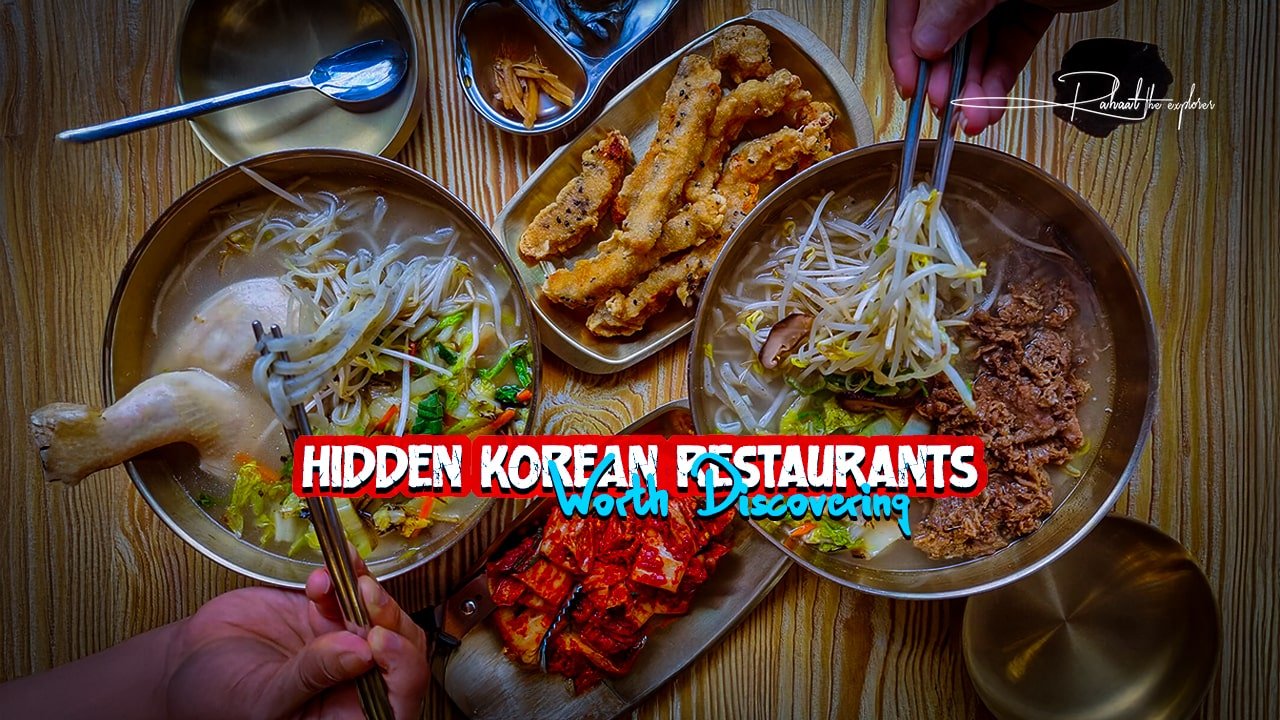Introduction
If you’re a food lover searching for something beyond the mainstream dining experience, exploring a hidden Korean restaurant could be your next culinary adventure. While well-known establishments offer classics like bulgogi, bibimbap, and Korean barbecue, tucked-away restaurants often provide a more authentic, intimate, and surprising taste of Korean culture.
In this guide, we’ll uncover why hidden Korean restaurants are worth seeking out, how to find them, the dishes you shouldn’t miss, and insider tips for enjoying the experience. Whether you’re traveling abroad or exploring your own city, these hidden gems will make your culinary journey unforgettable.
Why Choose a Hidden Korean Restaurant?
Hidden Korean restaurants often offer more than just food—they create an experience. Here’s why they stand out:
- Authenticity: Many are family-owned and follow traditional recipes passed down for generations.
- Unique Menus: Lesser-known dishes like samgyetang (ginseng chicken soup) or jokbal (braised pig’s trotters) often appear.
- Atmosphere: Cozy interiors and warm service make the experience memorable.
- Better Value: Compared to flashy restaurants, hidden spots usually offer generous portions at affordable prices.
- Connection to Culture: Dining in these restaurants often feels like being invited into a Korean home.
Signature Dishes to Try in a Korean Restaurant
If you’re stepping into a hidden Korean restaurant, these dishes are must-tries:
1. Korean BBQ (Samgyeopsal & Galbi)
Grilled right at your table, Korean BBQ is an interactive dining experience. Hidden spots often serve better marinades and homemade sauces.
2. Bibimbap
A colorful rice dish topped with vegetables, egg, and gochujang (spicy paste). In local restaurants, it’s served in sizzling hot stone bowls for extra flavor.
3. Kimchi & Banchan
No Korean meal is complete without kimchi and an array of small side dishes (banchan). Hidden restaurants often make them fresh in-house.
4. Jjigae (Korean Stews)
From kimchi jjigae to doenjang jjigae, Korean stews are comfort food at its best. Expect bold flavors and hearty ingredients.
5. Korean Fried Chicken
Known for its crunch and flavorful sauces, Korean fried chicken is best enjoyed with a side of pickled radish.
6. Street-Style Favorites
Some restaurants bring street food indoors, serving classics like tteokbokki (spicy rice cakes) and hotteok (sweet pancakes).
Where to Find Hidden Korean Restaurants
1. Koreatowns in Major Cities
Cities like Los Angeles, New York, London, and Sydney have bustling Koreatowns filled with hidden eateries tucked in side streets or basements.
2. Residential Areas
Some of the best Korean restaurants are outside the main tourist areas, where locals gather.
3. Travel Destinations in Korea
If you’re visiting Seoul, Busan, or Jeonju, look for restaurants in markets or alleys—these often serve the most authentic food.
4. Online Communities
Foodie blogs, forums, and social media groups often share tips about hidden Korean spots.
How to Spot a Truly Authentic Korean Restaurant
When seeking out hidden gems, look for these signs:
- Menu in Korean First: Shows authenticity and a focus on locals.
- Packed with Korean Diners: Locals know where the best food is.
- Homemade Side Dishes: Fresh, diverse banchan indicates quality.
- Simple Interiors: Don’t judge by the décor—taste matters more.
- Family-Run Atmosphere: You’ll often feel like part of the family.
Dining Etiquette in a Korean Restaurant
Knowing dining customs enhances your experience:
- Sharing is Key: Korean meals are designed to be shared.
- Respect Elders: Wait for the eldest to start eating before you do.
- Use Both Hands: When receiving drinks or passing items, use both hands.
- Chopsticks Etiquette: Don’t stick chopsticks upright in rice—it’s considered disrespectful.
The Growing Popularity of Korean Cuisine
Thanks to K-dramas, K-pop, and global cultural exchange, Korean cuisine has exploded worldwide. Yet hidden Korean restaurants remain special because they preserve traditional recipes that big chains sometimes simplify. They also highlight regional dishes that outsiders may not know—like naengmyeon (cold noodles from Pyongyang) or makgeolli (rice wine) from the countryside.
Safety & Travel Tips When Visiting Hidden Korean Restaurants
If you’re traveling abroad in search of hidden Korean food gems:
- Language Apps Help: Not all staff speak English, so use translation apps.
- Cash-Friendly: Some small restaurants may not accept cards.
- Allergy Awareness: Inform staff if you have allergies—Korean cuisine uses soy, sesame, and seafood frequently.
- Respect the Space: Many hidden spots are small, so be mindful of noise and space.
Why Hidden Korean Restaurants Are a Traveler’s Best Friend
For explorers like those following Rahaal the Explorer, hidden restaurants are an essential part of travel. They provide:
- A budget-friendly way to enjoy authentic meals.
- Cultural immersion through food.
- An opportunity to connect with locals.
- Memories tied to unique flavors you won’t find in tourist-heavy restaurants.
FAQs About Korean Restaurants
Q1: What makes a Korean restaurant authentic?
A genuine Korean restaurant uses traditional ingredients, offers diverse banchan, and is frequented by locals.
Q2: What are the must-try dishes in a Korean restaurant?
Bibimbap, Korean BBQ, kimchi, jjigae (stews), and fried chicken are classics you should try.
Q3: Are hidden Korean restaurants cheaper than popular ones?
Often, yes. They focus on authentic meals rather than flashy marketing, which keeps prices fair.
Q4: Can vegetarians enjoy Korean food?
Yes. Dishes like bibimbap (without meat), vegetable pancakes, and certain stews can be vegetarian-friendly.
Q5: How can I find hidden Korean restaurants near me?
Search food forums, Korean community groups, and local maps—or explore Koreatowns for tucked-away eateries.
Conclusion
Hidden Korean restaurants are more than just places to eat—they’re gateways to authentic culture, tradition, and unforgettable flavors. Whether you’re traveling in Korea or exploring your local city, these hidden gems provide an experience that blends food, atmosphere, and connection.
So, next time you crave something beyond the ordinary, skip the crowded mainstream spots and discover a hidden Korean restaurant. The flavors, warmth, and authenticity you’ll find are well worth the search.



















